At Southern Connecticut State University (SCSU), we are committed to providing the highest quality of education that meets rigorous academic standards. We take immense pride in the fact that several of our programs have achieved accreditation, a testament to our dedication to excellence in preparing students for successful careers. Accreditation ensures that our programs are recognized for their integrity, effectiveness, and commitment to continuous improvement. Accreditation not only validates the quality of our programs but also enhances the value of our degrees in the global marketplace.
Our Accredited Programs
At SCSU, we remain steadfast in our commitment to academic excellence, continuously striving to provide accredited programs that prepare students for success in their chosen careers.
Educator Preparation Provider (EPP)
SCSU’s Educator Preparation Provider (EPP), comprising 42 programs, is accredited by The Council for Accreditation of Educator Preparation (CAEP) through Dec 30, 2028. This accreditation underscores our commitment to preparing future educators with the knowledge and skills necessary to succeed in diverse and dynamic classroom environments.
Ed.D. in Counselor Education and Supervision
The Doctoral program in Counselor Education and Supervision is accredited by the Council for the Accreditation of Counseling and Related Educational Programs (CACREP).
Master of Library and Information Science (MLIS)
Our Master of Library and Information Science (MLIS) program is accredited by the American Library Association (ALA), through 2028. This accreditation affirms our dedication to providing a comprehensive and rigorous education in the field of library science, ensuring that graduates are well-equipped for leadership roles in the field.
MS in School Counseling
The Master of Science in School Counseling program at SCSU is accredited by the Council for Accreditation of Counseling and Related Educational Programs (CACREP), which is the premier independent accrediting body in counselor education, through March 31, 2027. This accreditation ensures that students are thoroughly prepared to support the mental and emotional well-being of students in K-12 settings. Learn more here about vital statistics in school counseling and counselor education and supervision. View the Annual Program Evaluation Report here.
MS in Mental Health Counseling
Our Master of Science in Mental Health Counseling program is also accredited by the Council for Accreditation of Counseling and Related Educational Programs (CACREP) through March 31, 2027. This ensures that our graduates are fully prepared and equipped with the skills and knowledge necessary to provide high-quality mental health care to individuals and communities.
SYC in School Psychology
The School Psychology Specialist program at SCSU is accredited by the National Association of School Psychologists (NASP) through August 1, 2032.
